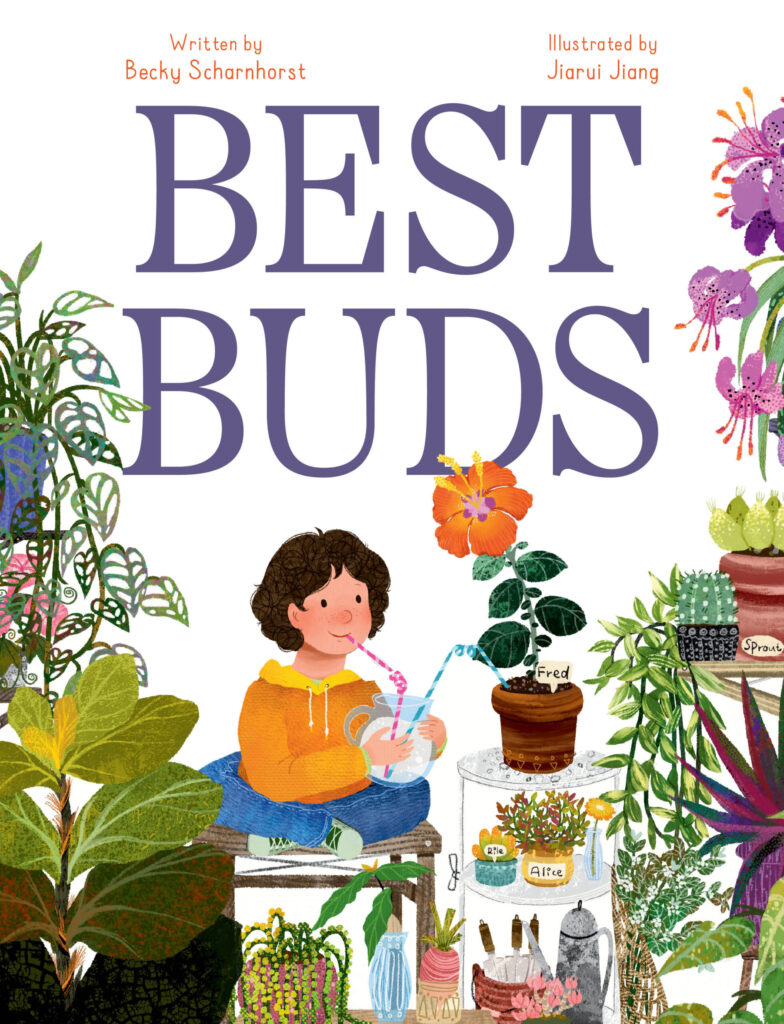 Welcome to Janine Le, the founder of Janine Le Literary Agency, “a full-service agency representing authors and illustrators of award-winning and critically acclaimed books for children and young adults.” With over a decade of experience in children’s publishing—including her time as an agent at Sheldon Fogelman Agency—Janine brings a blend of editorial insight, business expertise, and deep passion for storytelling.
Welcome to Janine Le, the founder of Janine Le Literary Agency, “a full-service agency representing authors and illustrators of award-winning and critically acclaimed books for children and young adults.” With over a decade of experience in children’s publishing—including her time as an agent at Sheldon Fogelman Agency—Janine brings a blend of editorial insight, business expertise, and deep passion for storytelling.
Her agency, launched in 2022, represents a diverse roster of award-winning authors and illustrators. Janine is drawn to picture books that beg to be read aloud, feature playful or poetic language, and offer fresh perspectives on childhood experiences. She has an eye for stories that spark joy, celebrate multicultural worlds, and offer creative storytelling twists.
Let’s learn more about her right now!
RVC: When did you first realize you wanted to work in children’s publishing?
JL: In high school, I got an inkling of what an editor was and thought that could be a good fit. I was always a bookworm, and in elementary school I thought I might want to be an author or a librarian. I also considered accounting in high school and professorship in college, but ultimately I wanted to be where the children’s books are made. Thanks to my mom for all the books and library trips and for indulging all my read aloud requests! (And turns out kidlit does not preclude you from doing accounting!)
RVC: That’s a good point about the accounting/kidlit combo platter! How did studying creative writing at Bucknell University shape your career path?
JL: I was incredibly lucky at the flexibility I had at Bucknell to select my own courses. I was able to take a good mix of writing courses in both poetry and prose and literature courses in a variety of periods and subjects, including children’s literature, as well as to pursue my honors thesis on the scholarly side.
There’s a wonderful literary community outside the classroom as well. I was an officer at a student literary & art magazine, attended many poetry readings, and interned with on-campus professional literary magazine West Branch. I also became a peer writing consultant. All of this together helped build my foundation of writing and editing tools and confirm that I was more passionate about helping others with their writing and advocating for their success than being a writer myself.
RVC: I assume attending NYU’s Summer Publishing had a real impact as well?
JL: SPI was very helpful in giving a survey of how publishing actually works and building NYC connections. I don’t think I’d heard of agenting before then, but I loved the agent panel. It was at their career fair that I connected with Sterling Lord Literistic, where I would do my internship.
RVC: And that led you to working at Sheldon Fogelman Agency or more than a decade. Now why/how did you make the decision to launch your own agency after that?
JL: Like any decision of that magnitude, there were a lot of factors (and even a pro and con chart), but the main motivator was flexibility to make my own schedule. The more seriously I thought about it, the more excited I was about focusing on my clients and building something new!
RVC: What’s the biggest difference between working at an established agency and running your own?
JL: SFA was very collaborative, so it was both challenging and freeing to go solo and trust my own instincts. Three years in, I’m so happy with my decision. I can handle most things on my own, and I have networks of agents when I need to phone a friend.
 The first new client I signed at JLLA, Shifa Saltagi Safadi, won the 2024 National Book Award for Young People’s Literature for her debut novel Kareem Between, and I’m working on a contract for our ninth book together (including pictures books, chapter books, and MG verse)! I’m so glad I not only trusted myself but that all my clients trusted me to build from the ground up!
The first new client I signed at JLLA, Shifa Saltagi Safadi, won the 2024 National Book Award for Young People’s Literature for her debut novel Kareem Between, and I’m working on a contract for our ninth book together (including pictures books, chapter books, and MG verse)! I’m so glad I not only trusted myself but that all my clients trusted me to build from the ground up!
I also spent six weeks that first summer doing a camping/national park roadtrip with my family from New York to California and back, which I don’t think I could have done otherwise. I try to continue using my flexibility for more quality time with family despite having the responsibility that I can’t be fully away from my desk since I don’t have any coverage.
RVC: Can you share the story of the first picture book you sold and what made it stand out?
 JL: I connected with Heather Preusser through 12 x 12. Her writing stood out to me for how clever and punny it was. We sold her picture book manuscript A Symphony of Cowbells to Sleeping Bear through an editor request at a conference she attended. It’s a great read aloud with plenty of onomatopoeia and alliteration, beautifully illustrated by Eileen Ryan Ewen. And you can now find even more of Heather’s wit in her chapter book series Hedgehog Whodunit!
JL: I connected with Heather Preusser through 12 x 12. Her writing stood out to me for how clever and punny it was. We sold her picture book manuscript A Symphony of Cowbells to Sleeping Bear through an editor request at a conference she attended. It’s a great read aloud with plenty of onomatopoeia and alliteration, beautifully illustrated by Eileen Ryan Ewen. And you can now find even more of Heather’s wit in her chapter book series Hedgehog Whodunit!
RVC: What was the biggest surprise (or lesson) that book provided?
JL: I’d been managing foreign rights, where we split advances 50/50 between author and illustrator, so I was accidentally overly ambitious with my counter offer after researching what the publisher had paid one of the agency’s illustrators. As I quickly learned, domestic text advances are closer to a third of what an illustrator is advanced, but royalties are still split 50/50.
RVC: By way of contrast, what was the story of your first picture book sold at your own agency?
 JL: Shortly after I opened, Walker Books asked Leanne Hatch to illustrate Angelo & Angelina, The Christmas Angels by Anne Booth. It’s a beautiful story of Christmas, and neighborly love, and little miracles, so it felt like an auspicious start. It turned out gorgeous in Leanne’s hands, of course! That was my fifth book with Leanne, and I’m thrilled we’re now in the double digits in our partnership!
JL: Shortly after I opened, Walker Books asked Leanne Hatch to illustrate Angelo & Angelina, The Christmas Angels by Anne Booth. It’s a beautiful story of Christmas, and neighborly love, and little miracles, so it felt like an auspicious start. It turned out gorgeous in Leanne’s hands, of course! That was my fifth book with Leanne, and I’m thrilled we’re now in the double digits in our partnership!
RVC: What’s the first thing that makes you think, “Yes, I need to represent this project”?
JL: It’s sort of like chemistry. I have to connect on an emotional level and want to drop everything I’m doing to work on your project.
 The first line in Leanne’s debut Unraveled is “The bond was instant.” Although she’s referring to a baby and his blanket, I think it’s a good metaphor for that must-have feeling!
The first line in Leanne’s debut Unraveled is “The bond was instant.” Although she’s referring to a baby and his blanket, I think it’s a good metaphor for that must-have feeling!
RVC: How important is visual pacing in picture book storytelling, and can you share an example of a recent book that does this especially well?
JL: It’s so important, not only to help pull readers through the story but also to give it the rereadability that’s crucial to picture books. Leo and the Pink Marker by Mariyka Foster is a great example. I  particularly love the action shots that show the protagonist multiple times in one image to portray movement! She also does a great job keeping the visual interest up with a variety of layouts. Full page art vs spots vs two page spreads, close ups vs wide angle shots. There are even some Easter eggs like a hidden mouse. This book was also recognized in SLJ’s Endies Endpaper Awards, which along with their Undies may be the most fun awards in kidlit!
particularly love the action shots that show the protagonist multiple times in one image to portray movement! She also does a great job keeping the visual interest up with a variety of layouts. Full page art vs spots vs two page spreads, close ups vs wide angle shots. There are even some Easter eggs like a hidden mouse. This book was also recognized in SLJ’s Endies Endpaper Awards, which along with their Undies may be the most fun awards in kidlit!
RVC: How do you guide debut authors and illustrators through the publishing process, especially those selling their first book?
JL: I’m very hands on. We start with a phone or video call to get to know each other and discuss edits in broad strokes, followed by at least one round of written notes and revisions. I then consult with the client on the submission list and pitch, share feedback from editors, and revise and submit further if needed. I am happy to walk debut creators through offers and contracts as much as needed, and I stay copied in all publisher communications throughout the publication process so I can follow their progress and support as needed.
RVC: How do you balance working with debut creators vs. more established clients?
JL: I signed most of my clients with their debuts and we don’t take their place in the industry for granted even as they get more established. I continue to work with them on project development, though editing and submitting sometimes gets easier. On the other hand, we have more backlist to manage.
I love helping debut creators break out and wish I could always keep an open door, but I am closed to submissions most of the time in order to focus on my existing list.
RVC: Are there any trends or innovations in picture books that excite you right now?
JL: One of the things I loved about my background at SFA is that I got to work on classics that are still selling 20, 30+ years later. Although I like books to feel fresh, I don’t really chase trends, which publishers tend to fill up on quickly. I’m most excited about books that feel like they have those enduring qualities.
RVC: One last question for this part of the interview. What’s coming up for your agency that you’re most excited about?
JL: I am genuinely excited about every one of our books, but I want to mention our upcoming author-illustrator picture book debuts, which include the sensory Nora At Night by April dela Noche Milne, the road tripping Rus & Moose by Chuchu Wang, and a curious capybara in Look Alike by Natali de Mello. Middle grade novelist Kerry O’Malley Cerra also makes her picture book debut with The Gallaudet Eleven: The Story of NASA’s Deaf Bioastronauts, illustrated by Kristina Gehrmann.
RVC: Okay, Janine. It’s time for the much-anticipated, never-equaled, always-surprising LIGHTNING ROUND. Let’s prepare to zing and zap here. Are you ready?
JL: Ready!
RVC: Your go-to snack while reading submissions?
JL: Reading happens at any hour, so I’m going to go with the one food I consider appropriate for any time: cereal.
RVC: Your biggest timewaster?
JL: Probably social media, but it also serves its purposes for staying connected and informed.
RVC: Three things you can’t do your job without?
JL: My phone, tablet computer, and notebook.
RVC: What’s the last picture book that made you actually LOL?
 JL: We are Definitely Human by X. Fang. I’m partial to dry humor.
JL: We are Definitely Human by X. Fang. I’m partial to dry humor.
RVC: A picture book every picture book maker should study?
JL: Miss Nelson is Missing! by Harry Allard and James Marshall. I loved it as a kid and it holds up really well, as do any of Marshall’s works. Bonus points for the fact that Marshall was a kind and funny person, as I learned from his agent, Sheldon Fogelman. I’m really pleased to be working with the James Marshall Trust again, now as trustee.
RVC: Janine Le is a literary agent who…
JL: is rooting for you. Whether I’m representing you or we meet in passing, I truly appreciate all the creators and professionals who work so hard to bring kids the books they need! I’m rooting for the kids as well!
RVC: Thanks so much, Janine!






 Rain!
Rain!
 Becky grew up in Northeast Wisconsin and spent most of her childhood playing in lakes and reading books. Shortly after graduating from Luther College, Becky spent a year working as a children’s bookseller and soon discovered she enjoyed reading picture books more than anything else. Now Becky spends her days writing children’s books and working at her local library. When she’s not reading or writing, Becky can be found hiking through the woods, baking something sweet, or thinking happy thoughts. She currently lives in Central Wisconsin with her husband, two kids, and a few too many pets.
Becky grew up in Northeast Wisconsin and spent most of her childhood playing in lakes and reading books. Shortly after graduating from Luther College, Becky spent a year working as a children’s bookseller and soon discovered she enjoyed reading picture books more than anything else. Now Becky spends her days writing children’s books and working at her local library. When she’s not reading or writing, Becky can be found hiking through the woods, baking something sweet, or thinking happy thoughts. She currently lives in Central Wisconsin with her husband, two kids, and a few too many pets.








